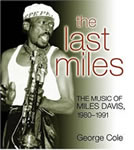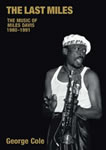In late 1986, Miles was asked to compose the music for a dark and mysterious film, Siesta. Part psychological thriller, part surrealistic fantasy, Siesta had a fine cast of actors that included Ellen Barkin (Claire), Gabriel Byrne (Augustine), Julian Sands (Kit Goodenough), Jodie Foster (Nancy), Alexei Sayle ( the cabbie from hell), Martin Sheen (Del), Isabella Rossellini (Maria) and Grace Jones (Conchita). Siesta was set mainly in Spain and directed by Mary Lambert; it was her first movie. At the time, Lambert was one of the hottest video directors around, working with artists such as Madonna (including “Borderline”, “Like a Virgin”, “Material Girl”, “La Isla Bonita”, and “Like a Prayer”), Annie Lennox, Sting and Mick Jagger. She also worked for a time with Prince on his movie “Under The Cherry Moon.”
As soon as Miles agreed to compose the music, he called Marcus Miller, who would virtually single-handedly compose, arrange and perform the music soundtrack. Miller not only produced some truly evocative music, but he inspired some of Miles’s best performances from this period, with Miles playing lots of open horn. Sadly, Siesta was not a success at the box office and so many people have missed out on hearing a gem of a soundtrack.
Mary Lambert kindly agreed to talk with The Last Miles.com about the film, the music and the art of film making.
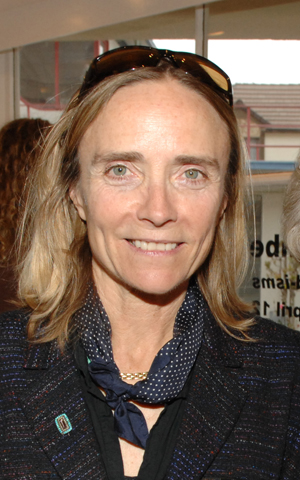
Mary Lambert © and courtesy Mary Lambert
TheLastMiles.com: How did you get to direct Siesta?
Mary Lambert: I picked up the script in Annie Lennox’s [singer in Eurythmics] dressing room. Patricia [Louisianna Knop, who also wrote the screenplay for 9 1/2 Weeks] was the writer and had sent it to Annie. At the time, I was doing a lot of music videos and hanging out a lot and having a great time in my life! I picked it up and started reading it and fell in love with it. The script is very unusual. The narrative is very emotional and very non-linear and that was what always appealed to me about music video work: the ability to fracture a narrative and leave it open for different interpretations.
Because I was sort of a hot young director at the time, my agent was pushing me to find a movie project and of course she was completely appalled when I chose Siesta! It was not a commercial project as it could have been! But I became obsessed with doing the movie. I contacted Patricia and we formed a friendship and she wanted me to direct it. I was in England and Gary Kurfirst – one of the producers – wanted me to meet with the people from Palace [Pictures]. They came on and I think we had about seven producers by the end of the project. It was a difficult project to birth but we did [it]. A lot of creative people were really drawn of the project because of the nature of the story.
TLM: You shot most of it in Spain. How long did it take?
ML: There was a little pick-up shooting in America. We shot it in ’86 in August in Spain and it took around 27- 30 days. It was unbelievably hot but I kinda dug that: that sense of heat and the hard light would really translate [on the screen] . The cinematographer was horrified by the hard light but I really loved it and it really adds to the movie. And Ellen [Barkin] was so young and beautiful and perfect at the time that she could really take the hard light. Good on her!
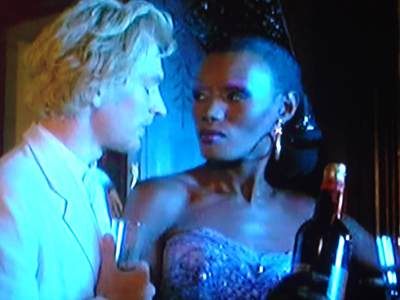
Julian Sands and Grace Jones
TLM: Let’s talk about the music. You had a temporary track of Miles’s Sketches of Spain?
ML: I was using it as a temp track. By the time we got to post-production, it was very difficult and money was so tight. We were all over the place: it started out in London, then we moved to Spain and then we edited back in the United States. At that point, I was just exhausted and it never occurred to me that we could get Miles Davis to do the soundtrack. I just kept on cutting. We brought in a song by the Tom Tom Club and then a cool song by Wendy and Lisa, but neither one of them was right for the actual score and I kept going back to Sketches of Spain, which is one of my most favourite albums. Finally Gary Kurfirst, said: “Why don’t we get Miles Davis to do the score?” I’m like: “Okay! Go get him!”
TLM: Did you approach Miles’s management?
ML: Tommy Lipuma [who at the time was head of jazz at Warner Bros and also Miles’s executive producer] was very helpful. Gary Kurfirst was a very powerful manager [he has managed The Ramones and Talking Heads and others] and was the main producer on the movie. He approached Lipuma, who just loved the idea immediately and went right to Miles with it. Then they set up a meeting with Miles.
TLM: Tell us about that!
ML: Everyone had told me to expect him to be hostile, surly, difficult. I’d been directing video movies for about five or six years by then, so it wasn’t like I wasn’t used to the drama of the rock star; the diva. So I knew there was quite a good possibility that it might be difficult creative thing and I was nervous about it. Miles wanted to see the movie and we gave him the directions to the soundstage in LA where we doing a bunch of mixes. He showed up driving himself. He didn’t show up in a limo with a big entourage, which I was kind of afraid of. He showed up in really big car — just the biggest Ferrari you could have with the biggest engine and he roared in. He got out of the car and we just got along right away. Sometimes I get along with people, sometimes I don’t. It was instant. He got out of the car and I said “Hi Miles,” and he said: “Hi Mary” and he sat next to me in the screening. We watched the movie and he was really attentive. People told me to expect that I wouldn’t really collaborate with him and that just wasn’t the case. We watched the movie and at one point and there was a scene with Jodie Foster and Ellen Barkin and he said to me: “Those two should sleep together.” I had to explain to him that the movie was already shot! The eroticism between them is hinted at in the movie and he definitely picked up on it! Miles really liked women!
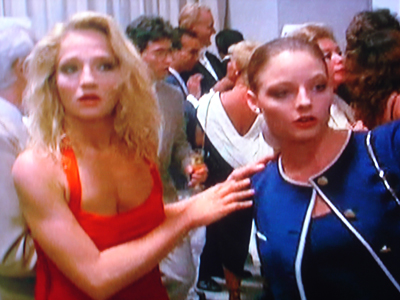
Ellen Barkin and Jodie Foster
TLM: Miles worked with Marcus Miller.
ML: Marcus Miller was really instrumental in pulling it together. He was really able to corral Miles; focus Miles. I went to most of the recording sessions. It was such an opportunity. Miles was an amazing person and it was so cool to be around him that I made a big effort to go to all of them. I love being there when music is being played, sometimes for the first time. Or when someone is being creative – it’s a big thrill for me. I went to at least three recording sessions. Marcus is a genius. He’s an amazing musician and he really focused what Miles did and arranged it in a way that really worked for the movie.
TLM: Marcus Miller recalls Miles asking him to work on some music for the movie. They recorded two tracks [“Siesta” and “Theme for Augustine”] and Miller assumed the job was done. But then you called him and he was surprised to learn that he was doing the music for the whole movie!
ML: As soon as I heard what Marcus could bring to the project, I wasn’t about to let go of him! I immediately realised the contribution that Marcus was going to make to the soundtrack — no disrespect to Miles. I wasn’t going to let him off until it was over!
TLM: Where there any memorable moments in the recording sessions?
ML: I’m always very respectful when I go a recording session. I don’t do any clowning around or try to insert my personality in any way. I’m just to listen and judge the direction of where things are going. The set is where I stand up and talk and give orders and make comments — I have a forceful personality on the set. But in the recording session, Marcus ran the session and Miles was the star of the session. I was always an adoring audience! And I was there to make sure I had a clear grasp of the direction things were going, because I didn’t want things to go too far in the wrong direction. I do remember one time when Miles came in and he had a pair of snakeskin pants. Marcus said: “Miles, you look like a lizard!” And he did. He had a sort of reptilian presence. His brain was kind of not exactly human — his brain worked on a different level. He was like a different species. I’m not saying that to insult Miles — I love reptiles — [but] Miles reminded me of a very beautiful reptile from another era. He was really psychic too. A couple of times when we were mixing the movie he called me. Once when I was making a few music cuts, the phone rang and it was Miles.
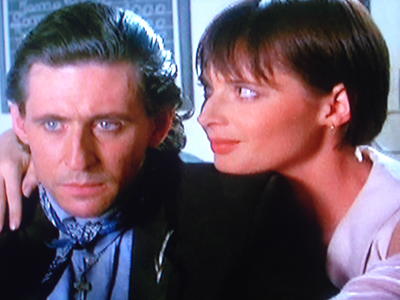
Gabriel Byrne and Isabella Rossellini
TLM: Are there any particular pieces of music that stand out for you?
ML: I love the music in the love scene – that’s one of my favourites. When she [Claire] comes to the little cabin and they [Claire and Augustine] make love — that’s really my favourite piece. That’s just pictures and music and emotions.
TLM: Marcus Miller says that the final track (“Los Feliz”) was hard to get right and that it took him several attempts.
ML: Because the narrative is fractured, the music was a big contributor to the emotional impact. The film was not shot in a traditional way and it’s not a traditional script, so you really need the music to underscore the emotions. If I remember correctly, that one piece was a little bit busy; there was just a little too much going on. For what I wanted, it was a little over-produced. I just kept asking him to simplify it. That’s what all I wanted; to just kind of pare it down to the bones of the melody. It maybe had just a little too much percussion. That’s a very subjective thing to say and what I meant was that there was too much percussion for what I wanted for the scene. There wasn’t anything done by Marcus that wasn’t done well.
TLM: It must be very difficult for the director and composer to work together on music for a film. There not only has to be the talent, but the chemistry between the two of you must good. There must be times when you have to be critical and the composer has to take that criticism and not get upset or overly protective about their music. It sounds like that wasn’t a problem here.
ML: I never felt that was a problem with Marcus or Miles. That was my biggest fear, because that can be a problem, especially when you’re bringing people to collaborate with a film, [and] if they’re too famous or too big of an artist in their own right. A single element doesn’t make a film; it’s made up of lots of elements and they all have to work together to produce a whole. You can have a beautiful frame, but there are 24 frames per second, so one beautiful frame is like nothing. The music has to work with the pictures. You can have fabulous music but if it works against the narrative or the emotions that you’re trying to produce for the audience, then it doesn’t work. That’s always a fear if you bring in a big artist; a major artistic clash. Musicians are not film makers and so they don’t understand and so they can get offended, but Marcus got it right away and Miles got it too — I had a really cool relationship with him.
TLM: Going back to the movie. It was quite complex with flashbacks and even leaps into the future. There’s a rape scene that is intercut with a lovemaking scene. Was all that in the script? How much does the director bring to a movie and how much the screenwriter?
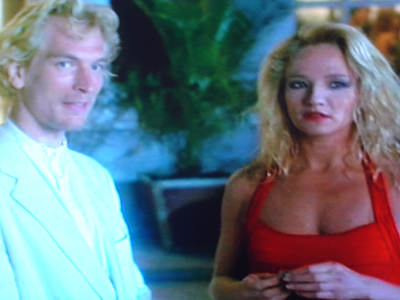
Julian Sands and Ellen Barkin
ML: I think intercutting the rape scene was my idea. The script is the beginning of the film. As a director, I always try to work the script as hard as I can. To pre-visualise the film and to make sure that everything I need to tell the story is in the script. Once you’ve done that and you’re on the set shooting it, sometimes the script doesn’t work and then it becomes something else; what you’re doing with the actors and what you’re doing with the camera [changes]. The reality of how things look through the lens — it changes when you shoot it. It always does. You think you’re going to start the scene off with a hand picking up the gun, but you get to the set and the sun is coming up behind the trees and just it’s so much more powerful than the hand – and so you shoot that. Sometimes you shoot the hand picking up the gun, but you know you’re not going to use it. A simple scene between two actors becomes really funny, or really ironic or really powerful and so you let it play longer than you were going to and just let the actors improvise. And then you start editing it. When I’m editing a film, I kinda throw the script away — don’t tell any writers this! The script is a script. Sometimes scenes that work on a page don’t work in a movie. Sometimes the sequencing you thought was going to work narratively just doesn’t convey the story. Or it’s a love story but the really powerful part was the relationship between two women. That wasn’t the case with Siesta, but it can be. I like to be really open in the editing process to make the best film and not just be a slave to the script. There were many different cuts of Siesta.
TLM: Were you disappointed by the response to Siesta?
ML: I was hugely disappointed by the support we got from the studio –there was no support at all. It was released in New York in a theatre around Thanksgiving [late November] and it had to be out of the theatre by Christmas. There was no chance for it – it just didn’t have support. There were also problems with the producers; lawsuits, legal problems. Eventually it got a cult audience. I also think it was a little bit ahead of its time, because subsequent movies very much in that vein are regaled as breakthrough movies.
TLM: They always said Miles’s music was ahead of its time too.
ML: Exactly.
